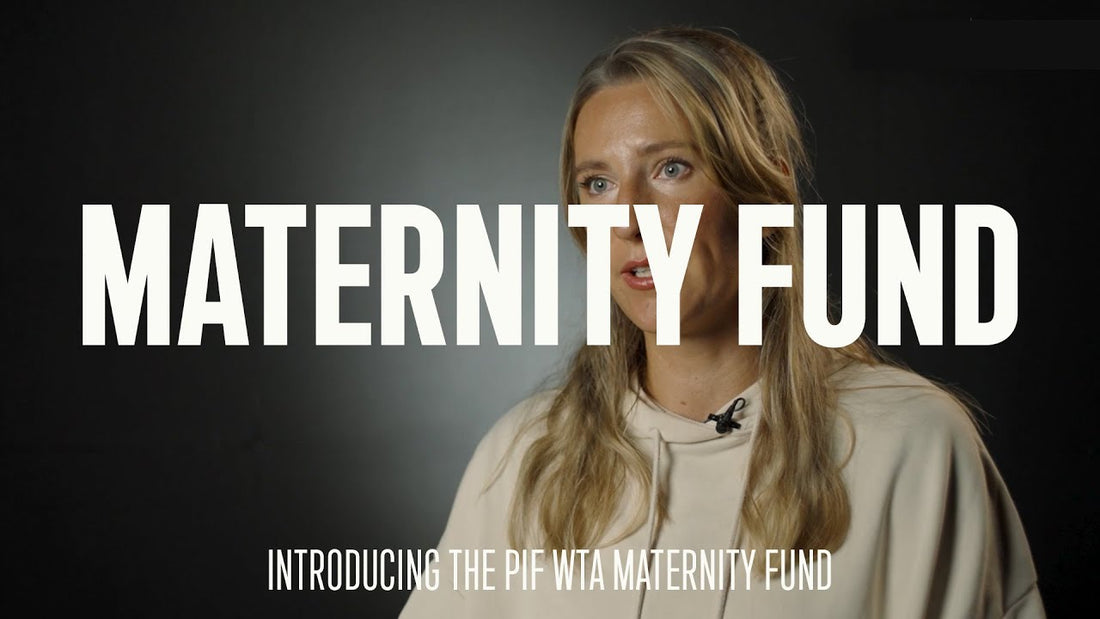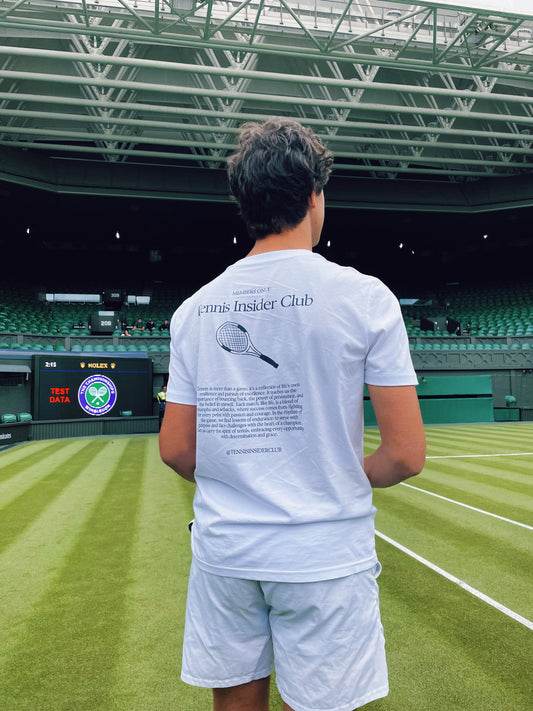
WTA’s Groundbreaking Paid Maternity Leave Program
The Business of Tennis – March 10, 2025 Edition
WTA’s Groundbreaking Paid Maternity Leave Program
The Women’s Tennis Association (WTA) has announced a first-of-its-kind paid maternity leave policy, setting a new standard in women’s sports. Backed by Saudi Arabia’s Public Investment Fund (PIF) and developed with the WTA Players’ Council, the program will provide up to 12 months of paid maternity leave for eligible players, along with grants for fertility treatments and other benefits . It marks the first time independent, self-employed female athletes(like tennis pros) have access to comprehensive maternity benefits, a pioneering move that the WTA and PIF hope will empower players to pursue both career and family without financial fear . More than 320 WTA players are immediately eligible for the new benefits .
Players and industry leaders are applauding the initiative. Former World No.1 Victoria Azarenka, who long advocated for better maternity protection, called it “a guided path she has long advocated for” after years of finding “no real structure” for players looking to return after childbirth . Belinda Bencic, who returned to competition less than a year after having her daughter, said the funded leave “gives players the chance to not have to make such a hard decision” about starting a family . She noted that for lower-ranked players especially, a guaranteed income during an extended absence relieves huge stress . American star Jessica Pegula termed the new fund “super innovative…a great thing,” highlighting how surprising and progressive it is to see this become reality in tennis .
From a business perspective, the WTA’s maternity program could have far-reaching effects on the sport. It is fully funded by an external partner (PIF) at an undisclosed amount , underscoring the growing role of Middle Eastern investment in tennis. Sponsors and stakeholders are viewing the move as a positive step for gender equality – “a win for the PIF and other sponsors looking for positive buzz” by helping close the sports gender gap . The initiative may improve player retention (keeping star players in the game longer) and enhance the WTA’s brand as a family-friendly, progressive tour, which in turn can attract more sponsorship. Industry analysts note that while team sports like the WNBA and soccer leagues offer paid leave for contracted players, individual sports until now only provided unpaid ranking protection . Tennis is effectively leading the way among individual women’s sports with this comprehensive policy, potentially setting an example that could spill over into other sports . There is also acknowledgment of the broader impact: with PIF as the WTA’s partner, the tour secures significant funding for player welfare, while PIF gains goodwill amid ongoing “sportswashing” debates . Overall, the WTA’s paid maternity leave program is being hailed as a historic investment in players’ well-being that could strengthen the business and image of women’s tennis for years to come.
Other Key Business Stories:
CVC’s $1 Billion Bid for Miami and Madrid Opens
Private equity giant CVC Capital Partners is looking to deepen its stake in tennis by acquiring two of the sport’s most prestigious tournaments. CVC – which already owns a stake in WTA commercial rights – has reportedly bid about $1 billion to buy the Miami Open and Madrid Open from current owner Endeavor Group . These combined ATP–WTA events are among the biggest outside the Grand Slams, and the sale process has drawn multiple bidders. Sources say Endeavor’s CEO Ari Emanuel is also interested in keeping the tournaments (even hiring Goldman Sachs to advise on a bid) , and other private equity firms have examined offers . The high price tag – with final bids due later this month – highlights the surging valuation of tennis assets. If CVC succeeds, it would further unify their investments in the sport (they invested in the WTA’s venture arm in 2021) and could lead to new commercial strategies for those tournaments. This bidding war signals strong investor confidence in tennis’s growth, as owners see opportunities to boost media rights, sponsorship sales, and profitability at marquee events.
Miami Open 2025 Boasts Record Sponsorship Deals
The upcoming Miami Open 2025 is set to be the biggest in the tournament’s history commercially, having attracted a record-breaking roster of sponsors. Long-term partners are sticking around – for example, Itaú remains title sponsor (since 2015) and Dunlop extended its official ball supplier deal through 2027 – and an array of new sponsors have signed on. Key backers now include Betway, Cadillac, Emirates, Lacoste, Hologic, PIF, and Baptist Health, all contributing funds and on-site perks for fans (Emirates is providing VIP lounges, Cadillac is showcasing car models, etc.) . Notably, Gillette Venus, Disney Cruise Line, and the Dominican Republic Tourism Board are new additions this year, joining as the official razor, cruise, and tourism partners respectively . “We are excited to welcome so many new sponsors…along with more than 30 valuable long-term partners,” said Josh Ripple, SVP of Tennis Events at IMG (which owns the tournament) . With over 30 sponsors on board for the 40th edition of the Miami Open , the event’s commercial appeal is soaring. The surge in partnerships underscores tennis’s marketing value: companies see these tournaments – hosted in Hard Rock Stadium with over 300,000 fans expected – as prime platforms to reach a global, affluent audience. The “Tennis Paradise” in Miami is truly living up to its name for sponsors, and tournament organizers anticipate the most financially successful Miami Open to date.
Players Score Big Off-Court: Luxury Endorsements and Investments
Tennis stars are leveraging their success into significant off-court business opportunities. A recent example is China’s rising WTA star Zheng Qinwen (ranked No.5), who inked a global marketing deal with fashion house Dior . The 22-year-old was named a global brand ambassador for Dior in January, a role that underscores her growing international profile and the luxury industry’s continued interest in tennis players (she follows the path previously taken by Emma Raducanu with high-fashion endorsements). On the men’s side, American Frances Tiafoe made headlines by signing an apparel sponsorship with Lululemon after years with Nike, reflecting new brands entering tennis partnerships. Beyond endorsements, players are diving into entrepreneurship and investments: retired legend Serena Williams has become a prominent venture capitalist – her firm Serena Ventures has backed 14 unicorn startups to date – and two-time Grand Slam champion Naomi Osaka has launched her own sports agency and invested in media and fashion ventures. These off-court moves not only provide players with additional income streams but also expand tennis’s cultural reach. From fashion to tech startups, tennis athletes are increasingly establishing business empires while still active in their sport. This trend enhances their personal brands and draws new sponsors and industries into the tennis world, blurring the line between athlete and entrepreneur.
Media Rights Deals and Tour Collaboration on the Horizon
The business of tennis broadcasting is undergoing significant developments. In the U.S., media giants are doubling down on tennis: ESPN recently locked in a 12-year extension for US Open rights through 2037 in a deal reportedly worth $2.4 billion , ensuring that the year’s final Grand Slam stays exclusively on ESPN platforms for the long haul. Meanwhile, starting in 2025, American tennis fans will see the French Open on new channels – Warner Bros. Discovery (owner of Eurosport and TNT) won a 10-year deal for Roland Garros coverage, tripling the US rights fee to about $65 million per year . These hefty agreements underscore the strong demand for live tennis content. At the same time, the ATP and WTA tours are moving closer to a strategic partnership in how they sell those rights. Plans are in motion to merge the tours’ commercial operations – forming a joint entity (dubbed “Tennis Ventures”) that would manage media rights, sponsorships, and data for both men’s and women’s tours . This unified front could be finalized in the first half of 2025 and is expected to increase tennis’s marketability by packaging the tours together. (Notably, because the ATP currently generates roughly four times the revenue of the WTA, revenue-sharing in the merger may start around an 80–20 split in favor of ATP , gradually adjusting as combined growth is achieved.) If realized, this collaboration would mark a historic business merger in pro tennis – streamlining negotiations with broadcasters and sponsors, and possibly leading to more lucrative, fan-friendly deals. For tennis audiences, it could mean more integrated coverage and branding across the sport, while for the tours and investors, it signals confidence that together, the ATP and WTA can command even greater commercial value.
Quick Hits: Noteworthy Business Bites
• Grand Slam Growth: The 2025 Australian Open smashed attendance records with 1.2 million fans over 15 days , surpassing the previous high by more than 100,000. Organizers also boosted the prize pool to AUD $96.5 million (≈$60 M USD), up nearly 12% from last year , ensuring higher payouts at every stage. Tennis’s popularity and player rewards are clearly on the rise Down Under.
• New Sponsor Model – Patches for Cash: Alternative investment firm Blue Owl Capital is taking an innovative sponsorship approach – planning to spend $2 million on player uniform patches across all four Grand Slams in 2025 . The company’s logo will appear on the kits of selected lower-ranked players who don’t have big endorsement deals, injecting money into those players’ pockets. It’s a creative win-win: emerging players get paid sponsorships, and Blue Owl gains visibility at tennis’s biggest events.
• Broadcast Deals Extended: BeIN Sports has renewed its media rights agreement with ATP Media to continue broadcasting the ATP Tour across 24 countries in the Middle East and North Africa through 2028 . This multi-year extension ensures that fans in the MENA region will have comprehensive coverage of all ATP Masters 1000 and ATP 500 events and the ATP Finals. The deal reflects steady international demand for tennis content, and it solidifies a key partnership for the tour in a growing sports market.
• Tennis Australia Invests in Innovation: Capitalizing on the Australian Open’s success, Tennis Australia’s venture arm AO Ventures raised about $49 million from investors to fund sports-tech startups . The new VC fund will invest in ~20 startups focused on sport, entertainment, and health, using Tennis Australia’s resources and events as a testing ground. This move not only diversifies Tennis Australia’s revenue streams but also positions it at the cutting edge of sports innovation – from player performance tech to fan engagement platforms – all potentially pioneered at Melbourne Park.
• Tech Upgrade on Tour: Starting this season, the ATP Tour is implementing Electronic Line Calling (ELC) Live on every court at all tour events . In a bid to modernize and improve accuracy (and reduce human error), traditional line judges are being phased out in favor of automated camera-based line calling. This technology was used in limited events before, but 2025 marks the first year it’s tour-wide, including the clay courts. The change could slightly reduce operational costs long-term and provides a more consistent officiating experience for players and viewers – a notable operational shift with business implications (standardizing the product for broadcasters and potentially shortening match interruptions).
Participate:
With the WTA leading the way on paid maternity leave, we want to hear from you: Do you think the WTA’s maternity policy will positively impact the sport’s business and player longevity? What other business changes or initiatives (such as sponsorship models, media innovations, or player programs) do you believe tennis organizations should pursue to grow the game? Share your thoughts – your insight could be featured in our next issue!




